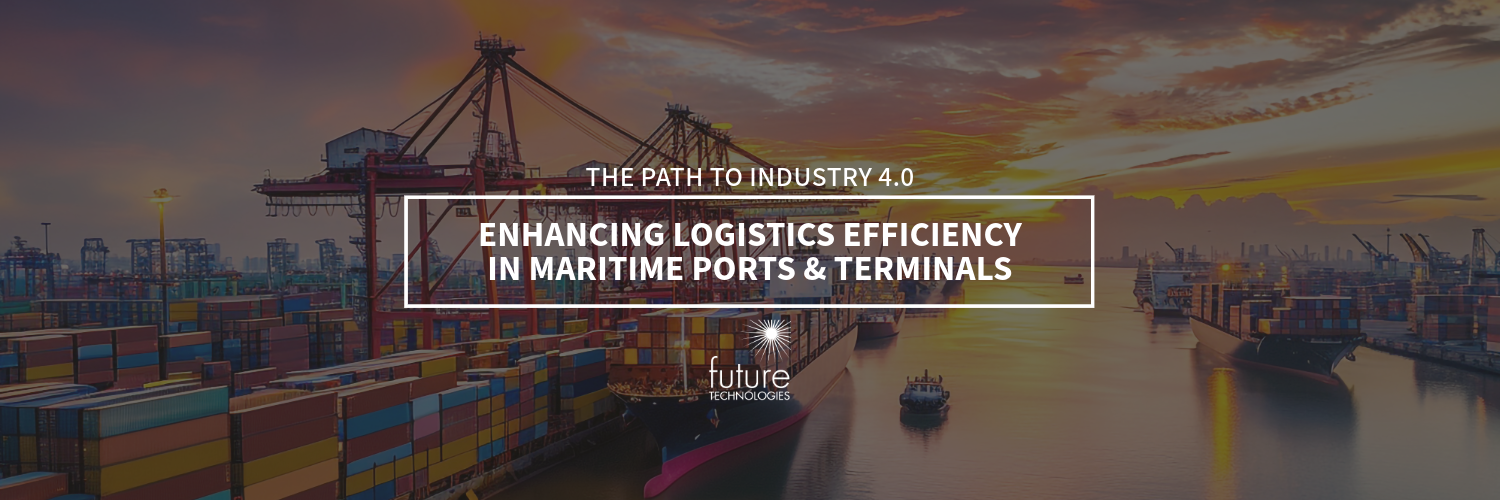

Enhancing Logistics Efficiency in Maritime Ports & Terminals
The digitization of maritime ports and terminals marks a significant leap forward in the efficiency and effectiveness of global trade operations. With the increasing volume of goods being transported across oceans, optimizing port operations is imperative for enhancing supply chain dynamics. When we're discussing digitization of ports & terminals we're referring to the integration of advanced technologies such as IoT sensors and data analytics to streamline port processes.
One of the primary benefits of digitizing maritime ports & terminals is the improvement in operational efficiency. By implementing digital solutions, ports can better manage vessel traffic, optimize container management, and reduce turnaround times for transport. Real-time data analytics enable port & terminal operators to make informed decisions, anticipate bottlenecks, and allocate resources more effectively. This not only enhances the overall productivity of ports & terminals, but also reduces wait times, leading to cost savings for logistics companies and ultimately consumers.
Next, let's talk about safety and security. With the integration of IoT sensors and surveillance systems, ports & terminals can monitor activities in real-time, detect potential security threats, and respond proactively to emergencies. This not only protects valuable cargo but also ensures the safety of personnel working within the port premises. Additionally, digitization enables better tracking and tracing of goods, reducing the risk of theft or loss during transit.
Digitized ports also contribute to environmental sustainability by optimizing resource utilization and reducing carbon emissions. Predictive analytics help minimize energy consumption, optimize routes for vessels, and reduce idle times, thereby lowering the carbon footprint of port operations. Additionally, digitization facilitates the implementation of green initiatives such as shore power facilities and alternative energy sources, further reducing the environmental impact of maritime transportation.
Collectively, the digitization of maritime ports and terminals brings about a multitude of benefits ranging from improved operational efficiency and safety to environmental sustainability. As global trade continues to expand, the adoption of digital technologies becomes increasingly crucial for ports & terminals to remain competitive and meet the evolving demands of the shipping industry. By embracing digitization, ports can enhance their capabilities, streamline processes, and contribute to the seamless movement of goods across the globe.
Implementation of new technology in any industry prompts a critical examination: Can our current network adequately support these new devices and applications? This question holds particular significance in the maritime port and terminal space, where the infrastructure must contend with the vast, dynamic, and mostly outdoor nature of these environments. Choosing the right Operational Technology (OT) and Information Technology (IT) networks is paramount in addressing the unique requirements and challenges inherent to maritime ports and terminals. These facilities span significant areas, often covering acres of land and water, with numerous buildings, storage yards, and equipment spread throughout. Such expansiveness demands a robust network infrastructure capable of providing seamless connectivity across the entire terminal, ensuring efficient operations and effective communication.
In this context, both WiFi and private cellular networks offer distinct advantages. WiFi networks provide flexibility, scalability, and cost-effectiveness, making them ideal for supporting a myriad of IoT devices, mobile computers, and handheld terminals commonly used in port and terminal operations. They enable real-time data exchange, tracking of assets, and coordination of activities, enhancing productivity and efficiency throughout the terminal. On the other hand, private cellular networks offer broader coverage, greater reliability, and higher bandwidth, making them suitable for applications requiring ubiquitous connectivity and high-performance data transmission. These networks can support mission-critical operations, such as vessel tracking, cargo handling, and port security, with minimal latency and downtime. Future Technologies believes that by strategically deploying a combination of WiFi and private cellular networks, maritime ports and terminals can leverage the strengths of each technology to create a comprehensive and resilient network infrastructure tailored to their specific needs and operational requirements.
To learn more about the use cases driving the Ports & Terminals industry forward AND the networks that power them, schedule a complimentary discovery call with our team
CONTACT FUTURE TECH TODAY
Future Technologies has over 20 years of experience in both site development and wireless network deployments, thus offering expertise across diverse project portfolios bringing a wealth of knowledge and past performance to your site development projects. Our site development services support a wide range of technologies to include private cellular, public cellular, licensed microwave, 4G/5G, fixed wireless (FWA), Wi-Fi, millimeter wave and Fiber/Wireline.

